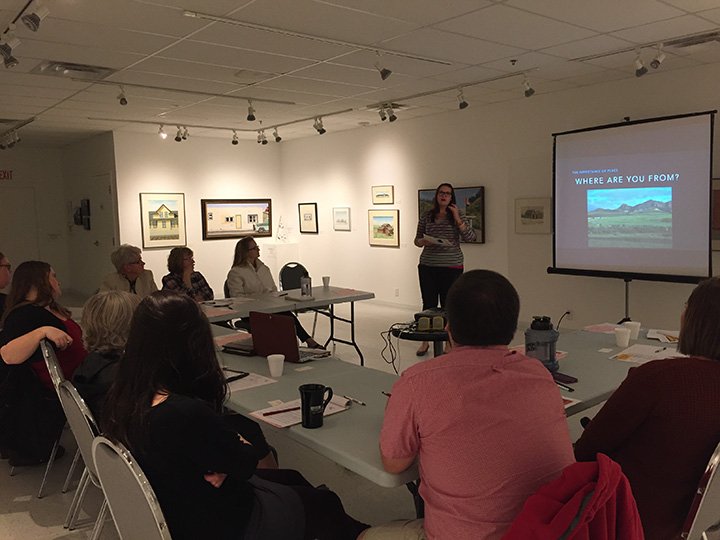Humboldt Leading the Way with Intangible Cultural Heritage

“Our culture is more than what we keep between four walls. It’s all around us,” explains Kristin Catherwood, storyteller, writer, folklorist and ICH Development Officer at Heritage Saskatchewan, in her recent workshops.
"It’s in our town names, the recipes we inherit from our grandmothers and in the stories we share.” Catherwood has been travelling across the province holding Intangible Cultural Heritage (ICH) workshops aimed at unlocking a community’s living heritage. The City of Humboldt is one such place.
When Jennifer Fitzpatrick, director of Cultural Services, City of Humboldt, first heard Catherwood’s presentation, she was excited to bring her workshop to Humboldt to help engage residents in ICH as part of community development. “I was enthralled with Catherwood’s presentation and how well ICH could fit with our organization’s future plans,” she says. In her role, Fitzpatrick manages the Humboldt & District Museum, the Gallery, the Original Humboldt Site, the Humboldt Water Tower and the public art program.
“I was enthralled with Catherwood’s presentation and how well ICH could fit with our organization’s future plans,” says Fitzpatrick, who then asked Catherwood to bring her teachings to Humboldt.
Thanks to the workshop, several ideas were sparked as to how to move ICH forward. The Humboldt & District Museum is currently under a re-design. Listening to community feedback on how they see projects moving forward is now seen as an essential part of the process. Several ICH projects have already started in Humboldt.

Work at the Original Humboldt land speaks to Catherwood’s teaching about the importance of its sense of place. “The land is the focus,” explains Fitzpatrick, “and the multiple stories from multiple voices are all centered on the land.
“We have also written a book called 100 Interesting Stories about Humboldt, which was the result of extensive interviews and research about ordinary life in the community. Our Heritage Values project, done in 2010, also asked what the community values for its tangible and intangible heritage. Even with these and many more projects, we are still learning from the community and excited to have further opportunities to engage residents.”
Fitzpatrick says one of the challenges of ICH is that people don’t understand at first how it is woven in to their everyday lives. “The concept of living heritage is a bit easier to comprehend than ICH. Brings the conceptual terms into the realm of today, as many people think heritage is only about the past.”
She adds that there is a misconception that every community’s ICH is the same. “Humboldt has a unique ICH, as does every other place in Saskatchewan …so it’s about reminding people about their valuable and unique sense of place.”
Fitzpatrick says she is excited to have Catherwood back to help further conversations with the residents, as the work will be led by the community. “Kristin is a wonderful presenter. The leadership of Heritage Saskatchewan in raising awareness of safeguarding ICH in our province is inspirational,” she adds. “Our staff and volunteers were certainly motivated to further the discussions of working with ICH in our community.”
If you are interested in hosting Kristin Catherwood’s Intangible Cultural Heritage workshop in your community, please contact Heritage Saskatchewan at info@heritagesask.ca and explain why you think your community is ready to begin integrating heritage into its cultural framework.




